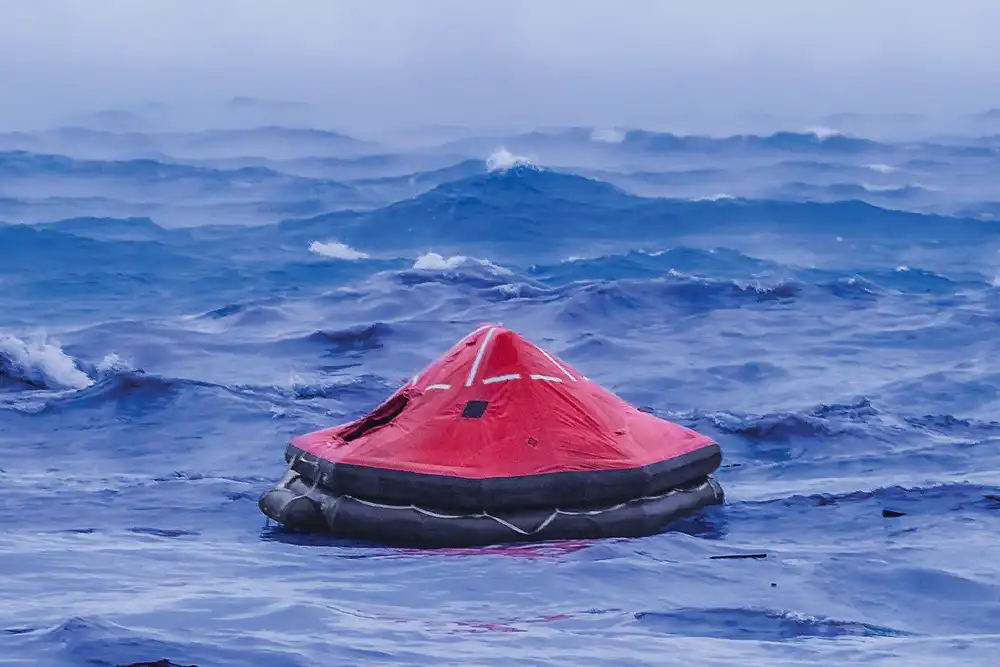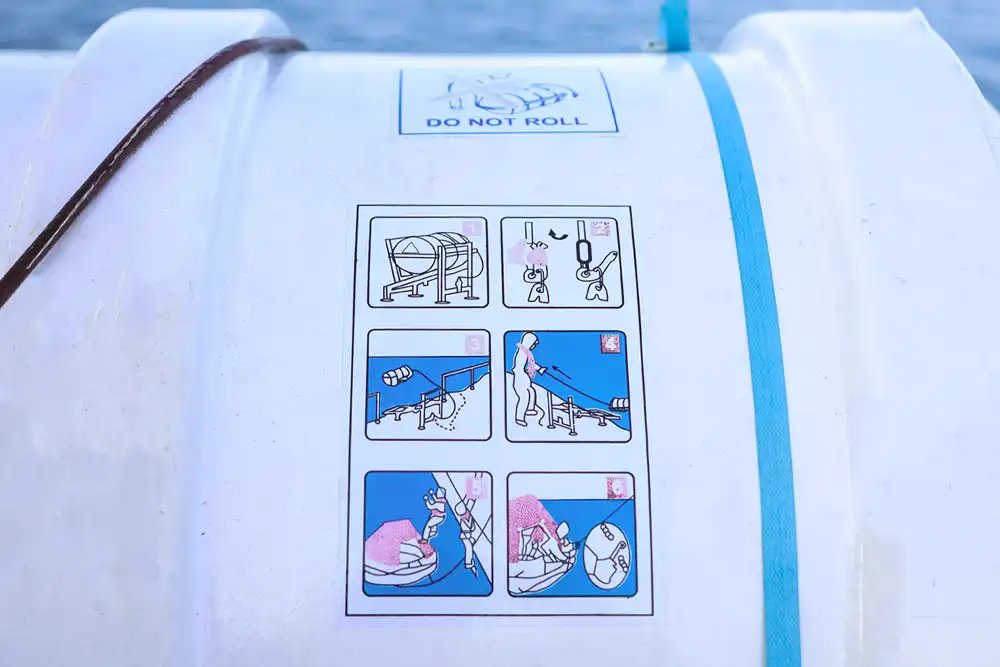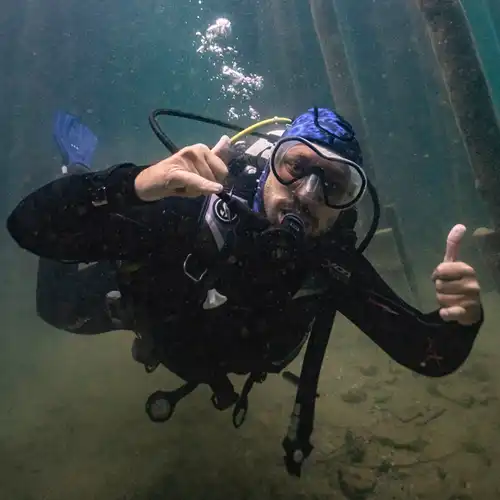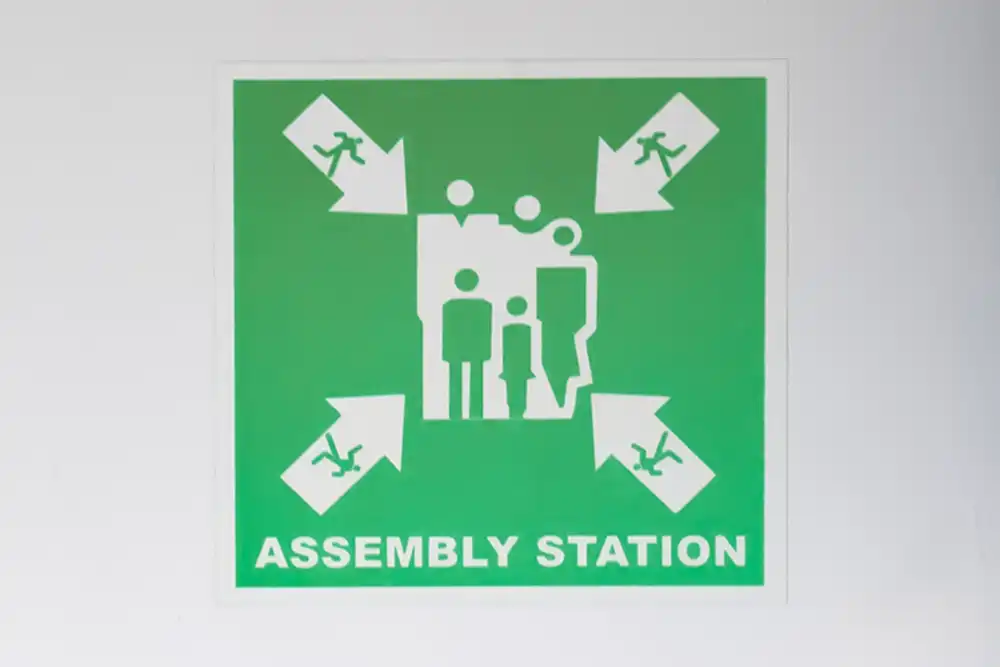
The loss of eleven lives when Sea Story capsized in November 2024 once again brought liveaboard safety to the fore – but what can we, as divers, do about it? Read this before you book your next trip
In February 2025, the UK’s Marine Accident Investigation Branch (MAIB) issued a safety bulletin concerning Egyptian liveaboards, pointing out several similarities between recent incidents in the Red Sea:
- The boats were poorly constructed and often substantially modified, both of which resulted in some exhibiting inadequate stability.
- Lifesaving equipment was defective, out-of-date for service and, in some cases, missing.
- The rapid spread of the fires was indicative of poor structural fire protection, and essential items of fire safety equipment, such as alarms and extinguishers, were either missing or defective.
- Emergency escape routes were via lockable doors, had no emergency lighting and were unmarked.
- Safety briefings to passengers were of a poor standard or not conducted at all.
- Crews appeared poorly trained and were unfamiliar with their vessels.
It’s important to note that it’s not just Egypt where such problems have occurred. At least three Indonesian liveaboards and one Thai vessel were lost during the same time frame.
Since this article was first published in our print magazine at the end of March, there has been another accident in Egypt and a Thai liveaboard burned to the waterline off Khao Lak – both, fortunately, without loss of life.
It’s also important to note that while it’s easy to blame sub-standard attitudes to safety often observed in developing nations, the worst liveaboard disaster of all time occurred in the United States – in 2019, the MV Conception caught fire at anchor overnight off the coast of California, resulting in the loss of 34 lives.

Some will argue that with so many boats, there are inevitably going to be losses, and while it is true that not every disaster is preventable, the loss of most of these vessels – and the fatalities involved – almost certainly was.
We assume that basic safety is taken care of by operators and overseen by appropriate authorities. We don’t walk around a jet we’re about to board to check if the engines are working and the tyres are properly inflated. But in the case of the latest liveaboard tragedies, raising a few concerns at appropriate times may well have saved some lives.
This is not to blame the passengers who boarded these vessels. However, we can no longer assume that the dive boats we board are up to code.
Since some authorities do not appear to be enforcing what codes there are, it falls to us, as divers, to call them out.
Once unscrupulous operators start learning that poor safety practices lead to poor profits, they will fall over themselves to tout vessel safety as a selling point.
WHAT CAN WE DO?
Liveaboard safety starts at the point of contact with the booking agent. Ask questions about the boat you’re booking: Does it have an up-to-date safety certificate? What fire alarm system is on board? Does it have emergency position indicating beacons (EPIRB) and emergency radios installed? Where are they located? Is there a charging station? What capacity are the life rafts? Is the crew trained in emergency management and firefighting? How is the safety briefing conducted?
You might not get answers to everything, but if you ask questions, a reputable booking agent or operator will answer them. If they don’t, then pick another boat or another booking agent.

Check online reviews and pay attention to the negative ones. A lot of them are going to be from unpleasant people with an axe to grind, but well-written reviews with multiple people in agreement are clear warning signs.
Once you arrive at your destination, if the boat does not match the information from the operator, then red flags should be raised. You might be mistaken, though, so check with the guides and the crew to see if they can address your concerns. Always ask; always expect answers.
WHERE DO WE LOOK?
There is a limit to what we can reasonably expect to inspect when boarding a boat. We can’t ask the crew to open up the life rafts to check everything works, but we can ask them to go through the operating instructions – which, by international law, must be present and visible on the exterior of the life raft’s container – during the muster drill.
Similarly, we can’t poke through every cabin to check every life jacket is present, correct and functional – but we can check our own jackets and those of our buddies during the muster drill – during which we will be shown where to find them, wherever we happen to be on the boat should we need them.

We can’t check every fire extinguisher, but we can note if some are not present, and we can expect that the crew will test the fire alarm and emergency warning during the muster drill, so we know what noise will be made if we need to get off the boat.
It’s important to remember, however, that wear-and-tear is not necessarily a safety issue. Cracks in the paintwork, dings in the woodwork and a bit of rust in the shower are the signs of a well-used boat that has worked its way through a busy dive season. Bear in mind that the crew only have a few hours between the last lot of divers disembarking and you boarding to get the vessel ship-shape and ready for your holiday.
WHY DO WE NEED A MUSTER DRILL?
The muster drill is an international requirement for any vessel carrying passengers who will be on board for more than 24 hours – yet many divers will never have heard of it, nor experienced one.
They’re not relevant on small day boats where all the passengers and crew are always either visible or within earshot, and where abandoning ship in an emergency means grabbing a life vest and hopping overboard where, in all probability, other boats will be nearby to assist.
Out at sea, however, muster drills are essential. They give everybody the chance to go through safety equipment and procedures together, as a team, and ask questions or discuss potential problems with the crew.

Although international standards require the muster drill to be given within 24 hours of embarkation, it is widely accepted that they should happen before you leave port or retire for the night, whichever comes first.
If you’re told it will happen the next morning, insist that it is made before then. Be reasonable – you can’t expect individual drills, and it’s better to have one with a full complement of passengers – but do not let them postpone it.
During the muster drill you will be guided around the boat and shown the location of emergency exits and how they operate. If they have a method of operation that is unfamiliar then ask to have a go at opening them yourself.
There are likely to be two muster stations – fore and aft – and you should be taken to both. It might seem obvious that you would be at either the front of the boat or its rear, but how do you get there in an emergency? And which deck? Dive platform or lounge?
In preparation for the drill you should have been told to bring the life jacket from your cabin with you. At one of the muster points the guides or crew should take you through donning and doffing the jacket, how its light operates and where to find the whistle.
You should be shown the location of the life rafts, asked to read the instructions and given a brief overview of what to do if you should ever have to use them.

The crew should sound the alarms for fire and – if different – for abandon ship, together with a briefing covering the abandon ship procedure.
Nick Hibberd, principal inspector of marine accidents for MAIB, says that we don’t need to be expert seafarers to gauge the level of safety on a boat, but a proper briefing will give us a good idea of where we stand when we board an unfamiliar vessel.
‘They can show you anything,’ he says, ‘but unless you’re a life raft maintainer, you probably wouldn’t have a clue, so there is an element of feeling comfortable that the basics, such as the muster, the escape, are covered. Is it well-lit? Are you told not to charge electronic devices below deck? Is there a plan to get off? Is there access to life jackets?
You can’t produce an exhaustive list but checking basic competency and provision of equipment is a good idea.’
SURVIVOR’S ADVICE: DANILO RÖẞGER

Danilo, from Germany, was trapped inside his cabin for an hour after Sea Story overturned. He escaped and was later picked up by a rescue helicopter.
- It’s hard to spot safety issues beforehand, especially when you’re in vacation mode. Sea Story looked impressive at first glance – luxurious, with a knowledgeable crew, and new equipment. But underneath were serious safety issues that only became obvious during the emergency.
- My general advice is to do your research. Check the operator thoroughly on forums, Reddit, Google or Tripadvisor. Negative reports should be taken very seriously, particularly those mentioning safety – even if they’re outnumbered by positive reviews. What appears to be an isolated negative review might actually be highlighting systemic problems.
- We all want to trust dive operators to provide a safe and enjoyable experience in exchange for our money, but this trust needs verification.
- If I could go back, I would have asked more specific questions about emergency procedures. Rather than accepting a basic safety briefing, I’d request details about emergency exit routes from specific cabins, location of emergency lighting systems, and ask to see where life rafts are stored and how they are deployed.
- During the capsizing, the most valuable asset would have been a waterproof flashlight secured to my person. In the pitch darkness of a flooded cabin, orientation becomes nearly impossible.
- Also, important documents (credit card, passport, etc) in a waterproof bag could save a lot of trouble afterwards.
WHAT TO DO IN THE EVENT OF AN EMERGENCY?
‘First of all, there has to be a way of raising the alarm and making people aware that there is an incident,’ says Hibberd. ‘That could be continually sounding the ship’s horn, or even banging pots and pans, but there has to be something to recognise that this is serious – we need to get up and get ready to go.’
Keeping a waterproof ‘go-bag’ containing any necessary medications, glasses, passport, mobile phone and a small torch next to your bed is a great idea, ready to grab if you need to leave your cabin in a hurry.

‘The next thing you should do is proceed to the muster station – there need to be at least two, so if you can’t get to one, you can get to the other,’ continues Hibberd. ‘Be aware of what happens when you get to that muster station: is it donning your life jacket or getting ready to get in a life raft?
‘Make sure that you know where everybody is – the captain should have a muster list so they know who’s who and where they are on board.
‘What happens next all depends on the situation – we’re not trained firefighters, so if it’s a fire you’ll be getting ready to get off, and you need to think about how to get into the life raft. Are you going to need to get into the water to do that, or can you safely keep it alongside the vessel?’
SURVIVOR’S ADVICE: SARAH MARTIN

Sarah is a Lancaster-based doctor who escaped her lower-deck cabin on Sea Story. She found herself drifting for nearly two hours before being picked up by the crew in a RIB and transported to a life raft.
- If changes are being made to the vessel/route, ask questions and find out why.
- Avoid operators and even geographical areas with repeated poor track records and safety failings.
- Ensure you have good travel insurance! Take time to read the fine print and choose a policy that provides the cover you need.
- Having a dive torch with me would have made a big difference.
- I would consider travelling with a personal locator beacon where it is legal (though this still relies on emergency services in the area responding, so it’s unclear how much help it would have been for us).
- Stay with the boat after escaping the interior – we didn’t realise this was the safest option, and initially swam away from the boat because of debris falling from it and being worried about it pulling us down.
- Take photos of all important documents – passport, cards, ID etc and save your insurance policy info. Send to yourself and someone else. I had all this info saved to my own drive but was not able to access it without my phone because of the need for dual-factor authentication.
- I spent a lot of the time in the life raft really wishing I’d worn some leggings to bed so I wasn’t just in a t-shirt and underwear and wishing my watch was on and charged.
- If the worst happens and you lose all your possessions, get a letter from your embassy in your language and the local language to explain what has happened. I found this very useful as airport officials wouldn’t recognise my temporary passport.
WHAT DO YOU DO IF YOU NEED TO ABANDON SHIP?
It’s important to remember that the call to abandon ship is a last resort. Fire can spread very quickly, but it can’t spread instantaneously, and even a badly damaged boat may remain at the surface for some time – Sea Story, for example, remained afloat for at least two days after capsizing.
The boat is a valuable resource for as long as it remains afloat. If it has an emergency position indicating radio beacon (EPIRB) then that will be the emergency response teams’ first point of contact. If it doesn’t have EPIRB, the boat is the largest available target for search operations.
Other valuable resources such as fresh water, food supplies, clothing, flotation aids, dive gear and perhaps mobile phones and radios might be accessible and – importantly – everybody can remain together.
The International Convention for Safety of Life at Sea (SOLAS) regulations stipulate that life rafts should be tethered to the boat with a rope known as the painter line.

Since a life raft thrown overboard into strong winds and currents becomes instantly useless, it should remain tethered once deployed, keeping it close to the boat and more easily accessible if needed.
Some painter systems have a hydrostatic release, a pressure-activated mechanism which will deploy the life raft if it is submerged. Once deployed, the raft is inflated by pulling on the painter – a minimum of 15-metres long by international standards, so there can be a lot of rope to pull – but it will eventually activate a cylinder of compressed air to automatically inflate the raft.
Painters are commonly secured through a specially designed clip known as the ‘weak link’, which will break under strain and prevent the life raft from being dragged underwater should its parent vessel sink. If there is no weak link, then the tether needs to be manually managed and detached if it becomes necessary.
‘You can’t prescribe exactly what to do because it depends on the situation,’ says Hibberd, ‘but you should stay with the vessel as long as you can, because that’s probably the biggest and best thing you’ve got. But you will need to go if it becomes clear that it’s untenable to remain.’
WHEN DO WE WALK AWAY?
Hindsight always makes it easy to spot red flags that may not have been obvious at the time, and it’s important to note that there are many fantastic operators who do their utmost to enforce the best safety standards possible. One broken life jacket does not make the whole boat unsafe.
Nevertheless, if you board a boat and it’s clear that the standards do not match the information provided by the operator during the booking process, then questions need to be asked. First impressions are not always accurate but if you really feel that your safety has been compromised, then it might be time to step up and say you want off the boat.
It’s a tough decision to make. No insurance firm will compensate you for abandoning your holiday in this manner, and if you want to claim for a replacement hotel from the tour operator you will need to have a lot of evidence to back you up.
Liveaboard safety should not be a unique selling point, it should be universal, and our best course of action is to call out substandard practice where we see it – and loudly.
The best time to walk away is when we’re making our bookings, so if, for any reason, you do not have confidence in your booking agent or liveaboard operator, find another.
Eventually, they will get the message and improve their safety standards, or go out of business – and both of those outcomes are acceptable.
More great reads from our magazine
- The Young Dive Ambassadors of Atlantis Dumaguete
- DIVE’s Big Shot Portraits – THE WINNERS!
- Inspiring Hope – an interview with Cristina ‘Mitty’ Mittermeier
- Shark and Jolanda Reef – Howard Rosenstein on the day it all began…
- Are work-for-training scuba diving internships worth it?



